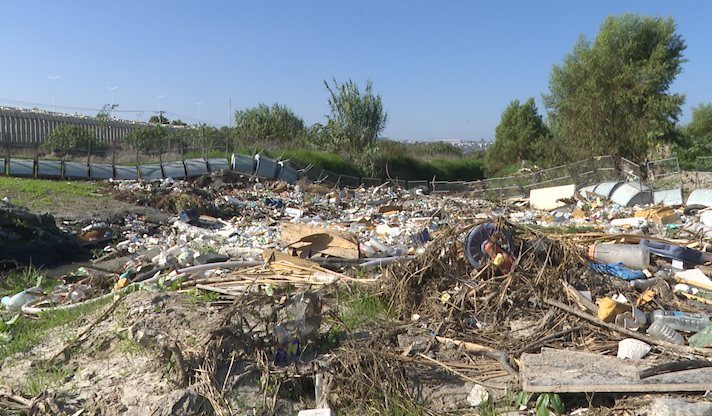SAN DIEGO (Border Report) — During a brief storm last month, a trash boom in the Tijuana River managed to stop 20 tons of trash and debris from entering California.
Historically, during rain events in the San Diego-Tijuana region, water flows from south of the border into the U.S. carrying tons of plastic, tires and other debris.
Last year, as a way to stop the pollution, a 1,200-foot trash boom was strung across the river bed by Alter Terra, a binational environmental group.
Sections of the boom float according to the level of the river — its fence-like partitions stop the trash from flowing farther into the Tijuana River Valley and the Pacific Ocean.
During the last rainy season, the boom stopped 500 tons of trash, which was hailed as a huge success.
In preparation for the upcoming storm season, the boom is back in place after being removed for about six months.





It is anchored by 120 tons of concrete to keep it from floating away.
The boom has been reinforced and fortified, especially in the center, to make it stronger and to prevent gaps where trash could get through.
The group is also installing door-like sections along the river’s edge to funnel even more trash into the heart of the boom
“All of this trash, 100 percent of it comes from Mexico,” said Oscar Romo with Alter Terra.
Romo says they deployed the boom in three days when they heard a storm was approaching the area on Oct. 14.

“In a little more than an hour, we got 20 tons of trash,” he said. “If this is an indication of what’s coming, we expect a lot more than 500 tons this season.”
Romo says after the rain subsided, they launched a drone to see how well the boom had done and were pleasantly surprised.
“We were looking at the river, there was no trash beyond the boom, we’re stopping it right here.”
According to Romo, while there’s no doubt the boom is a huge asset, there’s a lot of work to be done in this portion of the Tijuana River.
He would like all the vegetation cleared and the channel dredged as a way to remove layers of sewage that have settled on the river bed.
This spreads disease via mosquitos and generates a bad stench in the area.
“Think about 30 years of sewage going through this channel, he said. “There’s a big chunk of sediment that is really bad, cannot be cleaned. At one point all of this needs to be dredged and all of this sediment removed.”
Romo says there is no funding for a dredging operation, work that will ultimately be done by the federal government.
The boom itself will remain in place through next spring. Romo says they have funding to keep installing it into 2027.
 Read: Read More
Read: Read More




